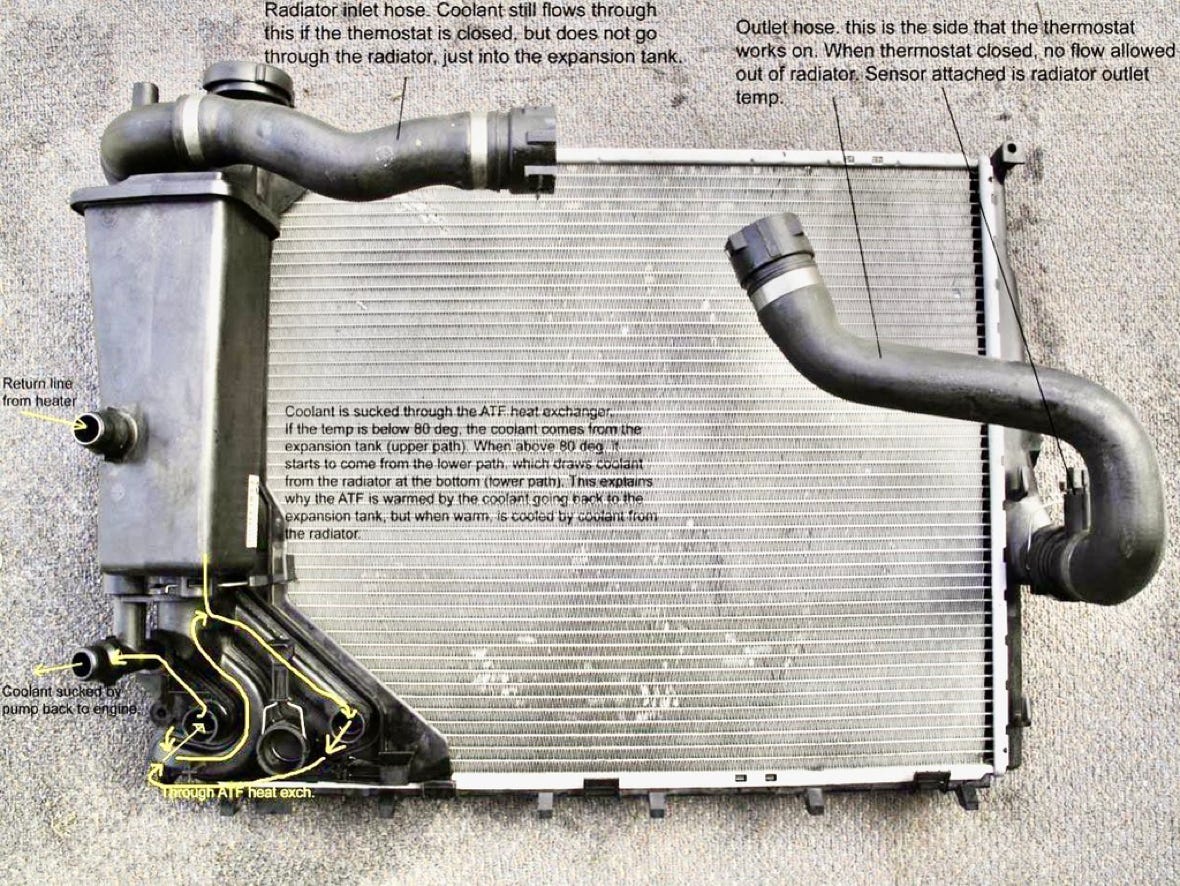Cooling System
The two things that typically kill an E46 are transmission failure and engine overheating. The transmission overheat can transfer to the engine through the transmission cooler. Flushing the transmission are regular intervals will help as will a regular cooling system flush.
the thermostat is not a common point of failure. The thermostat itself does not react to coolant temperature but is triggered by the ECU which decides to open the thermostat based on a number of criteria. There is a temperature sensor in the side of the block and an ambient air sensor either in the left front inner fender well or integrated into the Mass Airflow Meter. The ECU is also aware of the demand for AC and the engine oil temperature and can sometimes predict a rise in coolant temperature in advance and open the thermostat early to slow the heating of the radiator and conserve cooler coolant when possible. There is a common belief that the radiator outlet temperature sensor is responsible for signaling the ECU to open the engine thermostat. This is not so. The engine temperature sensor is located under the intake at the rear of the engine.
In the bottom of the ballast tank there is another heat driven thermostat that regulates the transmission cooling, or warming rather. It is intended to warm the transmission to its operating temperature more quickly and then circulate coolant through the transmission cooler heat exchanger to keep the transmission running as close to nominal operating temperature between 80C and 110C. Some folks have taken this thermostat out thinking that this will help the transmission stay cooler. In cold climates this will certainly shorten the life of the transmission. In the warmer climates the danger is that the transmission could heat the radiator to the point where boilover happens.
E46 Medic


